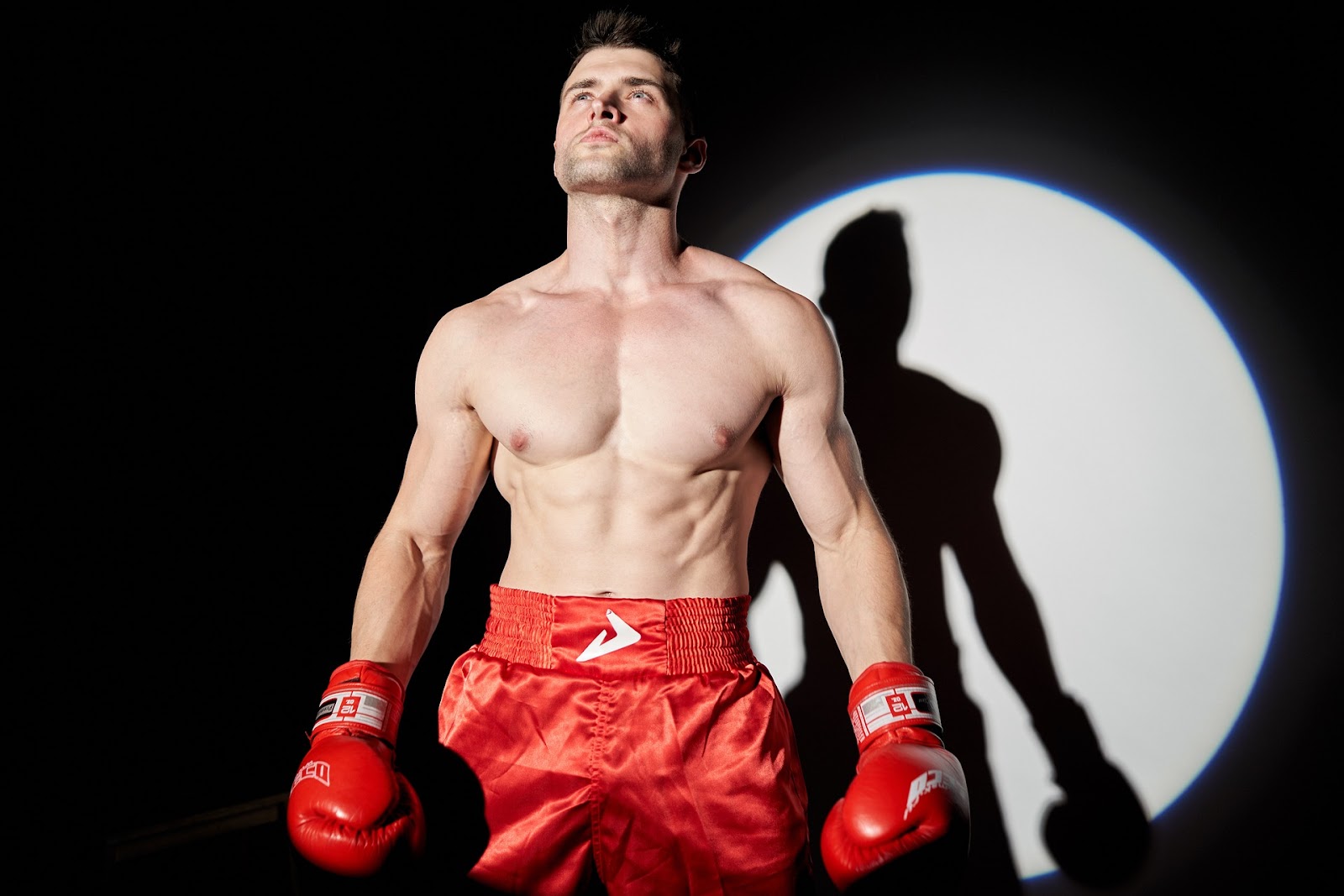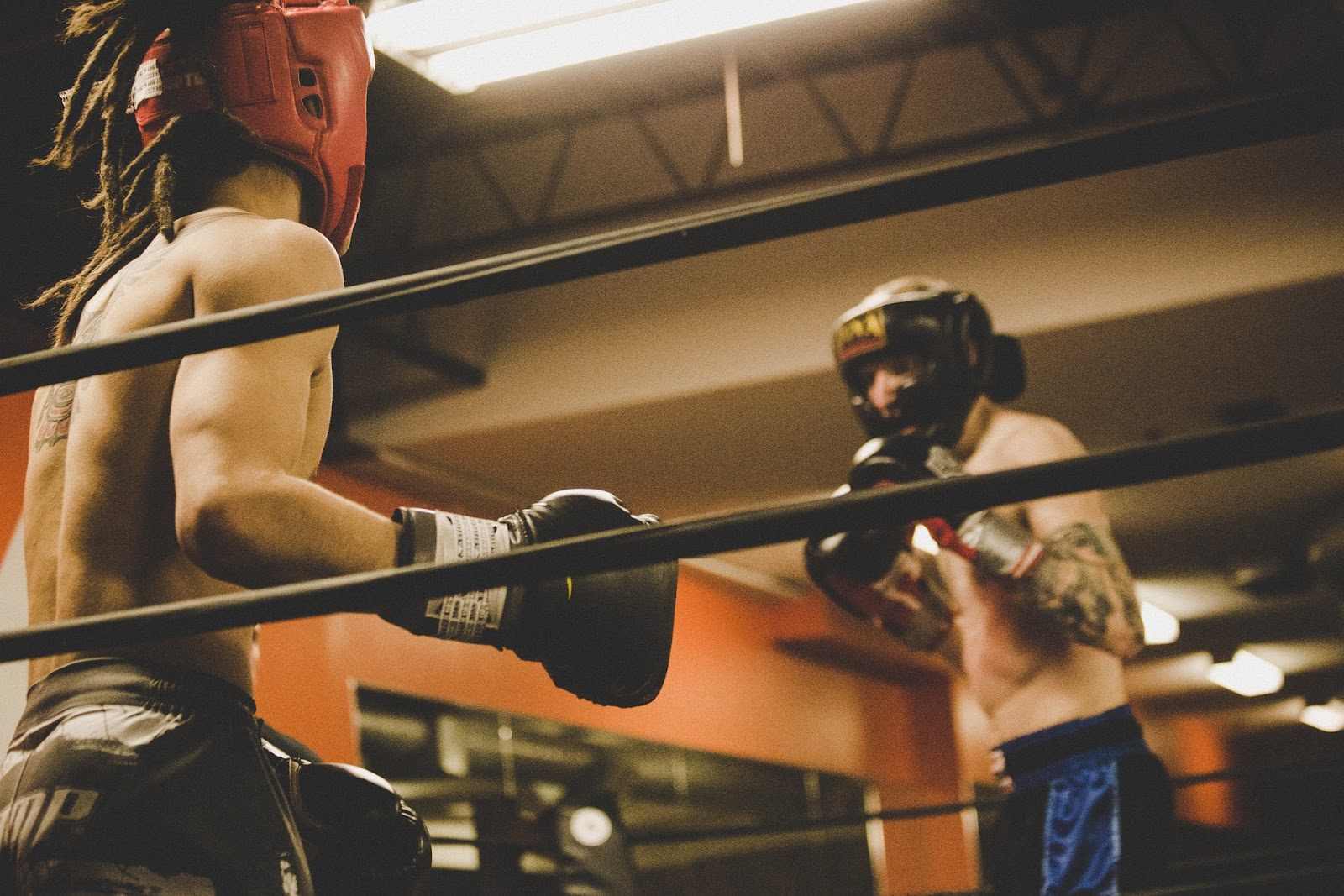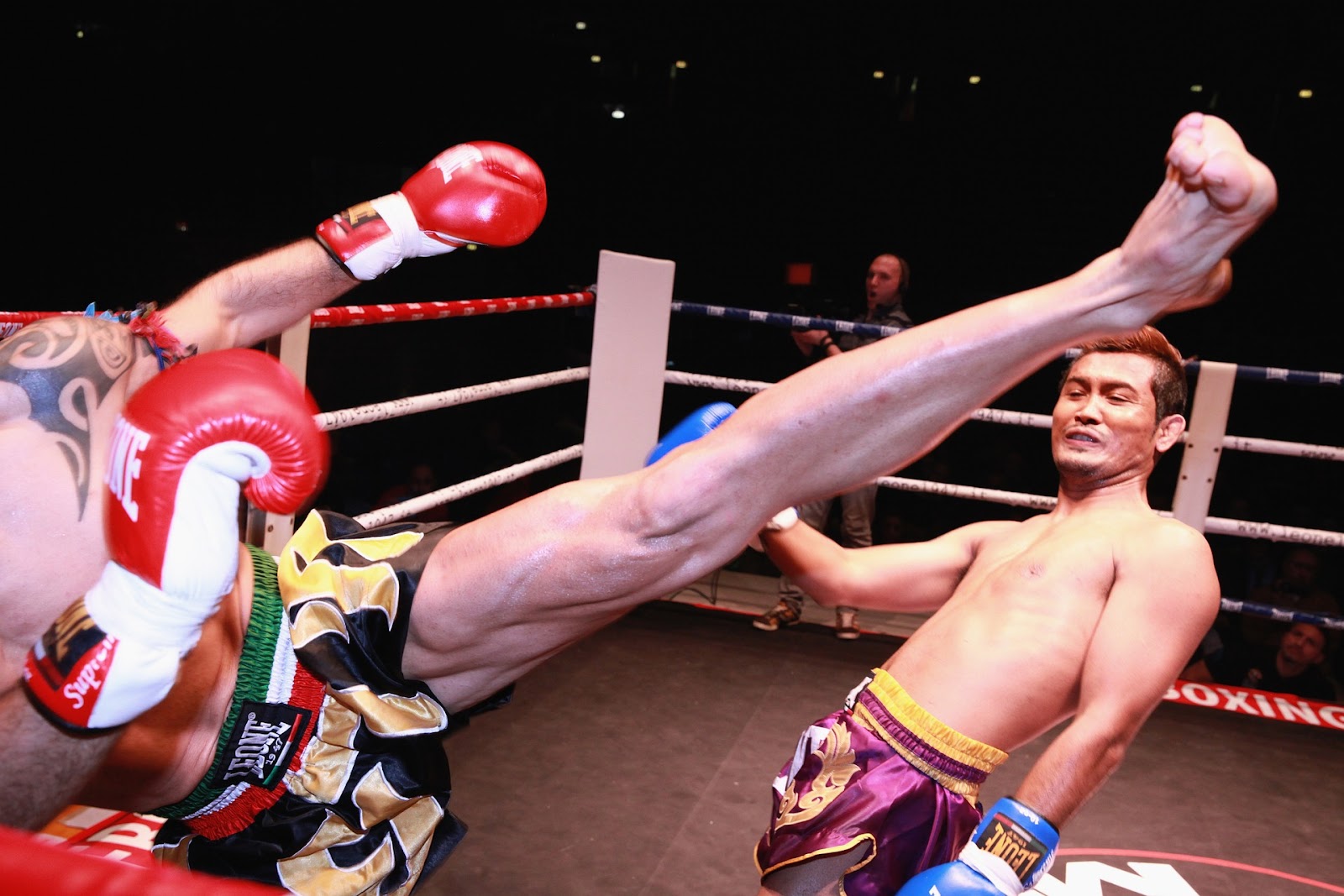The Ultimate Fighting Championship, also known as UFC, is one of the most popular and most successful mixed martial arts (MMA) organizations in the world today. But what many fans don’t realize is that the organization has a rich and vibrant history, which starts in 1993 when the UFC was founded.
This article will explore how the UFC was created, the early days of the UFC, and how it has evolved over the years.
Brief History of the UFC
The Ultimate Fighting Championship (UFC) first established its rules and regulations in 1993 with the purpose of providing a platform for different martial arts to compete against one another. The rules aimed to ensure safety while still showcasing the various moves and techniques of each respective martial art.
The first UFC event was held on November 12, 1993, in Denver, Colorado at the McNichols Sports Arena. The eight-man tournament featured fighters of different disciplines such as Brazilian Jiu-Jitsu, kickboxing, karate, tae kwon do and wrestling. The event was won by Royce Gracie who won three matches in one night using traditional Jiu-Jitsu techniques.
Since its inception, the UFC has become one of the biggest names in combat sports. It has enabled athletes from around the world to showcase their skills on a wide scale and has become one of the most widely watched sports events in history. Professional fights are now held all over the world with fighters from almost every major martial art represented by each card – making it truly an ultimate fighting experience!
The Founding of the UFC
The Ultimate Fighting Championship (UFC) is a mixed martial arts organization that was founded on November 12th 1993 by Rorion Gracie, Art Davie and Robert Meyrowitz. This event marks the beginning of the modern era of MMA, and the first UFC event date back to November 12, 1993.
Since its founding, the UFC has become one of the world’s fastest growing sports. Let’s take a closer look at the history of the UFC and why it was founded.
Who Founded the UFC?
The UFC, short for Ultimate Fighting Championship, was founded in 1993 by entrepreneurs Art Davie and Rorion Gracie. Davie was an avid fan of mixed martial arts (MMA) and wanted to bring the fighting style into the mainstream by creating a competitive league with rules. He had conceived of the idea a few years prior and brought Gracie on board to lead the instructional side of the sport.
Together, they brought together some of the biggest names in organization management, fighter representation, instructional technique, marketing strategy, and arena construction to create what is now known as one of the most successful combat sports franchises in history.
When was the UFC founded?
The Ultimate Fighting Championship (UFC) is today one of the world’s premier Mixed Martial Arts (MMA) organizations. It is the largest promotion in the sport with a global fan base. But before it rose to dominance, the UFC was just getting started. So when was the UFC founded?

The UFC can trace its roots back to 1993, when two men involved in martial arts competition – Rorion Gracie and Art Davie – crafted an idea for a new kind of no-holds-barred fighting event that would feature fighters from different disciplines competing in an eight-sided ring with few rules. The Gracie family had long been a leader in Brazilian Jiu Jitsu (BJJ), and Rorion wanted to prove that BJJ techniques could prove superior to other forms of martial arts.
Davie then secured backing from Semaphore Entertainment Group (SEG), which financed the initial production of The Ultimate Fighting Championship event held at Denver’s McNichols Sports Arena on November 12, 1993. The following year, they moved their event series to Las Vegas and signed television deals with networks like ESPN and pay-per-view providers like DirecTV.
Over time, as MMA has grown in popularity worldwide, so too has the UFC expanded; adding new organizations such as Strikeforce and Pride Fighting Championships into its portfolio, allowing for numerous crossover events between promotions over the years. Additionally, due to changes from organizations such as state athletic commissions across North America – including increased safety regulations for participants – rules were adapted which allowed more dynamic ways for fighters to win; adding rounds formats taking up 3 or 5 minutes with specific rest periods in between them and allowing for knockouts or submissions resulting from strikes or grappling respectively. To this day, these are some core principles that still live on with modern professional MMA events set forth by organizations such as the UFC up until present day.
1 https://www.ufcgymsbibralakewa/about/ufc-history/
What Were the Goals of the UFC?
When the Ultimate Fighting Championship (UFC) was founded in 1993, it had a unique mission and set of goals: to bring forth a new form of martial arts competition that combined techniques from a variety of martial arts styles. This “no holds barred” competition would showcase the skills and abilities of some of the world’s most talented fighters and allow them to compete in an open-weight class format, allowing competitors to choose their own weights.
The UFC was founded by Rorion Gracie, Art Davie, John Milius and Bob Meyrowitz with support from television executive Campbell McLaren. They sought to put on the most exciting fight possible with fewer rules than traditional full-contact combat sports like boxing. The organization initially offered eight weight classes (which eventually became five): lightweight, middleweight, light heavyweight, heavyweight and super heavyweight.
The objective of the UFC is twofold: first, to find out which martial art works best in a real fight situation; and second, to establish a reliable framework for judging MMA fights. To ensure fairness in combat regulations from event to event and country to country, rules were created within the UFC’s Unified Rules framework which aimed to introduce safety measures to ensure fighters’ safety while preventing unfair advantages over opponents. With these guidelines as a baseline for all professional MMA fights sanctioned by the UFC today; subsequent updates have been made throughout the years as MMA continued its globalization around the world.
The Early Years of the UFC
The UFC, or Ultimate Fighting Championship, is a mixed martial arts sports organization that was founded in 1993. This groundbreaking organization was borne from a desire to find out which martial art style was the most effective in a no-holds-barred competition. With a simple 9-point system and rules based around safety, the UFC was born and quickly became popular among fans of combat sports.
Let’s take a look back at the early years of the UFC and explore how it has changed over the years.
The First UFC Event
The first UFC event took place at McNichols Sports Arena (now Pepsi Center) in Denver, Colorado on November 12, 1993. It was a single-elimination tournament featuring eight fighters transformed by martial arts expertise, courage and competitive spirit. This first event introduced the idea that combatants in different disciplines were no longer limited to only fighting within their own style.
The main event featured Royce Gracie of the renowned Brazilian Jiu-Jitsu family against former sumo wrestler Teila Tuli. Gracie emerged as the victor, submitting Tuli in just 57 seconds with a triangle choke hold and quickly becoming a star among fight fans. The remainder of the card carried forward this commitment to crossover martial arts competition with seven matches spanning multiple disciplines, including Boxing, Kickboxing, Karate and Wrestling.
Ultimately four men from this inaugural tournament eventually won divisions within the UFC; Ken Shamrock (Light Heavyweight), Gerard Gordeau (Heavyweight), Royce Gracie (Middleweight), and Steven Jennum (Middleweight).
Early UFC Fighters
The Ultimate Fighting Championship was founded in November of 1993. Since then, many successful and devoted fighters have stepped into the Octagon—the UFC’s signature ring—to test their strength and skill in the world of mixed martial arts.

Early UFC fighters had to prove themselves against a variety of martial arts masters, from wrestlers and boxers to judo practitioners and karate experts. Their styles were often as intriguing as they were diverse, but there is no denying that these early stars helped shape what we now consider is the modern MMA landscape.
Some of the most well-known names emerging in the early years of the UFC include Royce Gracie, Ken Shamrock, Dan Severn, Mark Coleman, Don Frye and Tank Abbott. Many of these fighters — Shamrock in particular — achieved #1 ranked status but only lasted a few years before retiring or leaving for other projects. However, their impact was lasting; thanks largely to these adored competitors, their fights brought attention to both martial arts techniques as well as more traditional methods such as boxing or kickboxing.
In addition to winning titles and putting on memorable shows for fans around the world, some of these early UFC talents also showcased unique styles that eventually became popular with contenders who followed them into battle many years later—such as Josh Barnett’s catch wrestling style or Don Frye’s “Too Hot To Handle” style where he has been known to hold both his opponents’ arms behind his back during fights. These characters set the precedent for all aspiring mixed martial artists to come.
Early UFC Rules
The early days of the UFC saw an experimental set of rules meant to ensure the safety of fighters and create a reasonable, sport-like atmosphere for competitors. When the sport was founded in 1993 by Art Davie and Rorion Gracie, there were few rules for fighters to follow. The initial Unified Rules (UFC Rule Set) was created in 2001 and revised multiple times, with modifications intended to increase fighter’s safety and reduce prompting brawls between competitors.
The early UFC rule set included restrictions on eye gouging, hair pulling, head butting, groin strikes, striking an opponent while they are down, fish hooking (crafting the skin) and striking with the forearms or elbows. Kicks to a kneeling fighter’s head were not allowed during this early period and all matches had to end within two five-minute rounds (eight if it was a championship bout). Carefully-controlled mandatory pre-fight medical checks were also instituted and managed by medical staff associated with each respective state athletic commission or other regulatory body for international events.
Overall, these modified regulations created a safer environment for combatants that allowed the audience to focus solely on techniques rather than intensifying any kind of violence associated with no holds barred fighting prior to its debut.
The UFC Today
The Ultimate Fighting Championship (UFC) was founded in 1993 and has since become one of the most popular Mixed Martial Arts (MMA) organizations in the world. What began as an eight-man tournament in a television studio has grown into one of the most well-known sports in the world, having held over 500 events in more than 20 countries and crowning more than 20 champions.
Let us take a look at what the UFC is like today.
Current UFC Fighters
Since the UFC’s founding in 1993, the organization has grown to become one of the world’s largest and most popular combat sports promotions. Over nearly three decades, the UFC has created a vast roster of MMA fighters from all around the globe, with athletes representing numerous countries. Today, world-class fighters compete on a weekly basis while vying for titles in their various weight classes. Each fight card provides thrilling matches and showcases some of the most talented martial artists on Earth.
Current UFC fighters include champions such as Israel Adesanya (middleweight), Valentina Shevchenko (women’s flyweight), Max Holloway (featherweight), Robert Whittaker (middleweight) and Amanda Nunes (women’s bantamweight); contenders like Jan Blachowicz (light heavyweight), Darren Till (welterweight) and Alexander Volkanovski (featherweight); plus newcomers such as Ray Borg (flyweight) and Andrea Lee (women’s flyweight).
This large and diverse group features men AND women who represent many different combat styles, nationalities, cultures and backgrounds. The UCF continues to grow every year as more remarkable athletes set out to become part of its impressive roster of competitors.
Current UFC Rules
When the UFC was founded in 1993, mixed martial arts (MMA) did not have very many established rules in place. However, today the organization has a detailed set of rules and regulations that fighters must follow during all match activities.
These rules are designed to ensure the safety of both fighters and spectators alike, as well as provide fair competition for all participants. Generally speaking, these rules cover a number of areas such as weight divisions, acceptable moves and techniques for grappling and striking, fouls, legal and illegal strikes and submissions, round length and frequency of matches, referee procedures and drug testing protocols.
In addition to these general regulations, there are some particular rules that apply exclusively to UFC event fights. These include regulations on timing between rounds; permissible conduct within the cage; uniform guidelines; glove requirements; use of lubricant or Vaseline on body parts during fights; medical reports before fighters may enter the Octagon® cage; time limits to select judges before bouts are held; referee hand signals for submission attempts or knockouts; and other restrictions specific to these events. Fighting under these standardized rule sets allows for an open exchange of ideas within MMA competitions making it entertaining for viewers around the world.
UFC’s Global Reach
Since 1993, when it was founded in the United States, the Ultimate Fighting Championship has grown to become a premier global brand. It is now the world’s biggest mixed martial arts franchise and has taken fighting to a whole new level. Thanks to its incredible success, UFC events are now broadcast to over 156 countries and have spawned numerous digital outlets and channels through which fans can experience live fights and commentary.
The UFC also strives to reach out across national boundaries by hosting events in many different countries. From Arabia to Wisconsin, South America to Australia, events for fighters of any style or origin are available for fans in virtually any country of the world. The UFC has become truly multicultural mix of fighters worldwide who bring a variety of disciplines into their battle inside the octagon – from wrestling and striking-based martial arts like karate and Muay Thai, as well as mixed martial arts infused with jiu-jitsu or kickboxing styles.
The growth of UFC is also evidenced through its fans’ dedication in following their favorite heroes at events all around the globe – from press conferences in Brussels before an event at Ziggodome, boardwalks along Aquaventure Beach before Fight Night Abu Dhabi or crowded stadiums like Jeunesse Arena at Fight Night Rio de Janeiro. Ready access via digital streaming services means that even if you don’t catch a particular fight on pay-per-view television, you can still watch content online right after finding out who won Live on Twitter or Facebook!




No Comment! Be the first one.